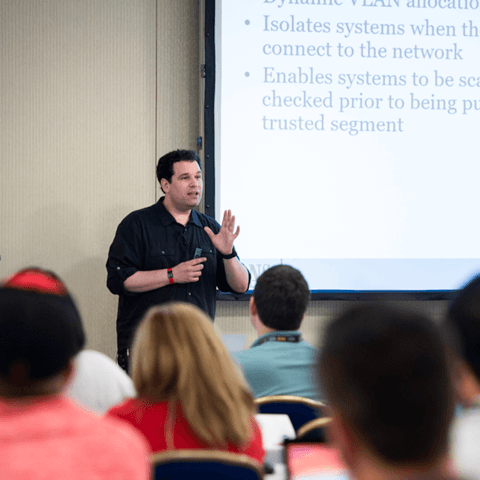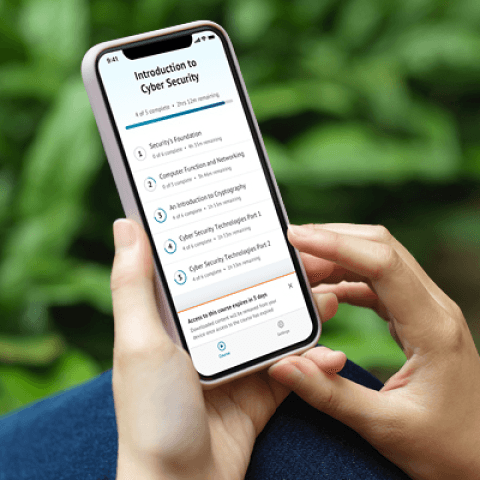SEC595: Applied Data Science and AI/Machine Learning for Cybersecurity Professionals


Experience SANS training through course previews.
Learn MoreLet us help.
Contact usBecome a member for instant access to our free resources.
Sign UpWe're here to help.
Contact Us
Apply your credits to renew your certifications
Attend a live, instructor-led class at a location near you or remotely, or train on your time over 4 months
Apply what you learn with hands-on exercises and labs
Learn cutting-edge cybersecurity engineering and advanced threat detection skills for cloud, network, and endpoint environments in this comprehensive course.
I would recommend this course. It hits many core aspects of secure design. Additionally, lack of cloud security architecture and strategy and insecure design have been highlighted as a top risk by organizations like Cloud Security Alliance and OWASP. Cloud security architecture topics need to have more attention and focus in general.
SEC511 prepares defenders to secure hybrid enterprises using tools like Zero Trust, Artificial Intelligence and Machine Learning (AI/ML), Extended Detection and Response (XDR), and cloud technology. With 18+ hands-on labs and a capstone challenge, this course builds real-world skills in detection, response, and cybersecurity engineering across cloud, network, and endpoint environments.


Eric Conrad, a SANS Faculty Fellow and course author, has 28 years of information security experience. Eric is the CTO of Backshore Communications and his specialties include Intrusion Detection, Threat Hunting, and Penetration Testing.
Read more about Eric Conrad

As a SANS Fellow and Principal Consultant at Context Security, Seth’s work bridges traditional operations with next-gen AI security practices. His pioneering threat detection strategies have shaped global blue team standards.
Read more about Seth MisenarExplore the course syllabus below to view the full range of topics covered in SEC511: Cybersecurity Engineering: Advanced Threat Detection and Monitoring.
This section covers modern cyber defense, shifting from reactive to proactive strategies. Students explore MITRE ATT&CK, Zero Trust, and GenAI risks, and tackle hands-on labs to detect and respond to evolving threats.
This section explores visibility and protection across cloud, edge, and network environments. Students learn about IDS/IPS, TLS/DNS encryption, cloud and edge security tools, and apply skills in hands-on labs and a NetWars Bootcamp.
This section focuses on Network Detection Response (NDR) within Network Security Monitoring (NSM) and Security Information and Event Management (SIEM), teaching students to detect threats using diverse data sources and analytic techniques. Hands-on labs and NetWars Bootcamp reinforce skills in threat hunting and traffic analysis.
This section covers endpoint and user security in hybrid environments, focusing on Endpoint Detection and Response (EDR), Endpoint Protection Platforms (EPPs), identity protection, modern authentication, and User and Entity Behavior Analysis (UEBA). Labs and NetWars Bootcamp build hands-on defense and monitoring skills.
This section covers securing GenAI and Large Language Model (LLM) apps, software supply chains, and SOC automation using SOAR. Students gain hands-on skills in threat hunting, adversary emulation, and ransomware response via labs and NetWars.
The course concludes with a full-day, team-based NetWars competition, challenging students to apply and master modern cyber defense skills through hands-on, multi-level design, detection, and defense missions.
Ensures systems and software security from development to maintenance by analyzing and improving security across all lifecycle phases.
Explore learning pathDesign, implement, and tune an effective combination of network-centric and data-centric controls to balance prevention, detection, and response. Security architects and engineers are capable of looking at an enterprise defense holistically and building security at every layer. They can balance business and technical requirements along with various security policies and procedures to implement defensible security architectures.
Explore learning pathResponsible for ensuring that security requirements are adequately addressed in all aspects of enterprise architecture, including reference models, segment and solution architectures, and the resulting systems that protect and support organizational mission and business processes.
Explore learning pathDesigns and evaluates information system security throughout the software lifecycle to ensure confidentiality, integrity, and availability.
Explore learning pathDeploys, configures, maintains infrastructure software and hardware to support secure and effective IT operations across organizational systems.
Explore learning pathImplements and maintains network services, including hardware and virtual systems, ensuring operational support for infrastructure platforms.
Explore learning pathOversees program, system, or enclave cybersecurity, ensuring protection from cyber threats and compliance with organizational standards.
Explore learning pathOversees cybersecurity configuration and daily security operations of control systems, ensuring mission support and stakeholder coordination.
Explore learning pathAnalyze network and endpoint data to swiftly detect threats, conduct forensic investigations, and proactively hunt adversaries across diverse platforms including cloud, mobile, and enterprise systems.
Explore learning pathThis job, which may have varying titles depending on the organization, is often characterized by the breadth of tasks and knowledge required. The all-around defender and Blue Teamer is the person who may be a primary security contact for a small organization, and must deal with engineering and architecture, incident triage and response, security tool administration and more.
Explore learning pathSecurity Operations Center (SOC) managers bridge the gap between business processes and the highly technical work that goes on in the SOC. They direct SOC operations and are responsible for hiring and training, creating and executing cybersecurity strategy, and leading the company’s response to major security threats.
Explore learning pathDevelops business and IT process architectures, creating baseline and target architectures to meet mission or enterprise goals.
Explore learning pathResponsible for testing, implementing, deploying, maintaining, and administering infrastructure hardware and software for cybersecurity.
Explore learning pathResponds to and investigates network cyber incidents, performing analysis to mitigate threats and maintain cybersecurity in enclave environments.
Explore learning pathSecurity Operations Center (SOC) analysts work alongside security engineers and SOC managers to implement prevention, detection, monitoring, and active response. Working closely with incident response teams, a SOC analyst will address security issues when detected, quickly and effectively. With an eye for detail and anomalies, these analysts see things most others miss.
Explore learning pathMonitors cyber defense tools like IDS and logs to analyze network events, identifying and mitigating potential threats to security environments.
Explore learning pathDevelop, deploy and operate cybersecurity solutions (systems, assets, software, controls and services) on infrastructures and products.
Explore learning pathAdd a GIAC certification attempt and receive free two practice tests. View pricing in the info icons below.
When purchasing a live instructor-led class, add an additional 4 months of online access after your course. View pricing in the info icons below.
The comprehensive training in SEC511 was directly relevant to my day-to-day responsibilities at work and has opened up numerous job opportunities for me in the cybersecurity sector.
SEC511's lab sessions provided critical practical experience that helped solidify the theoretical concepts.
I run SOCs and this course will and does provide a gut check against what we are doing today.
The labs and exercises were excellent and provided additional supplementary, hands-on learning that helped solidify the course content.

Get feedback from the world’s best cybersecurity experts and instructors

Choose how you want to learn - online, on demand, or at our live in-person training events

Get access to our range of industry-leading courses and resources